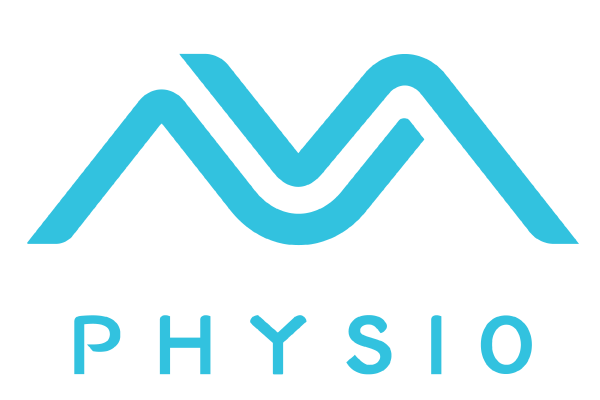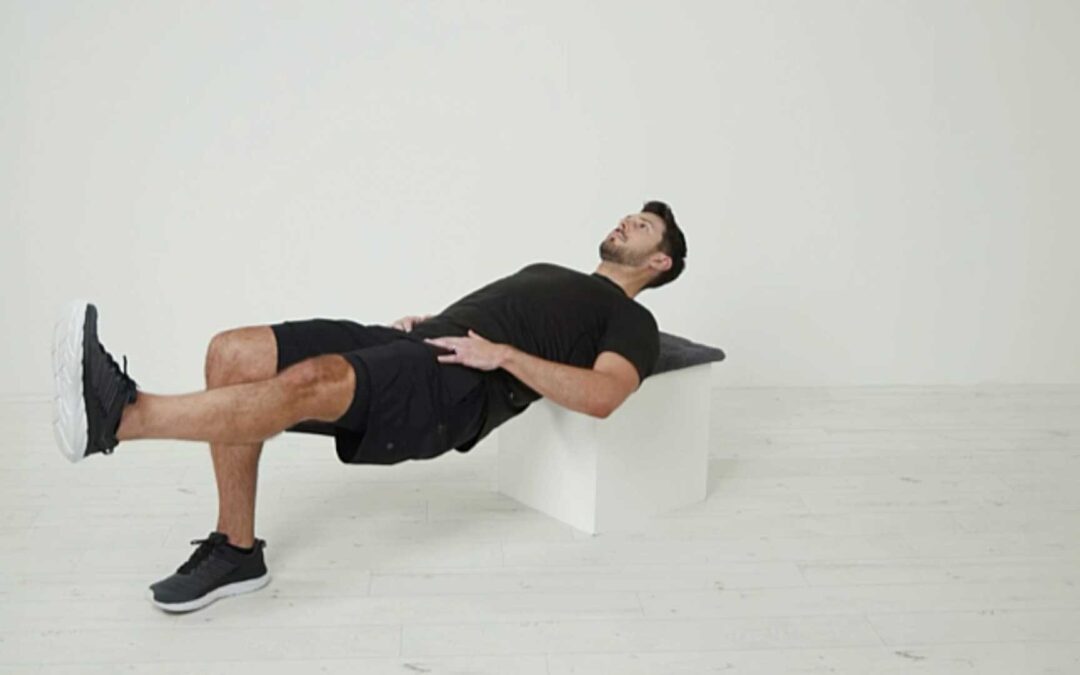What is the Single Leg Hip Thrust?
The single leg hip thrust off a box primarily targets the gluteus maximus, the largest muscle in the buttocks. This exercise also engages the hamstrings and quadriceps, contributing to overall lower body strength. By strengthening these muscles, you can improve knee stability, hip function, and athletic performance.
Research has shown that strong gluteal muscles are crucial for knee stability, especially during activities that involve jumping, running, or changing directions. The single leg hip thrust off a box helps activate and strengthen these muscles, providing a solid foundation for knee rehabilitation and injury prevention.
Moreover, the single leg variation of the hip thrust is particularly beneficial for addressing muscle imbalances and asymmetry. In many cases, individuals may have one side of their body stronger than the other, resulting in compensatory movements and increased risk of injury. By performing the single leg hip thrust off a box, you can correct these imbalances and ensure that each side of your body is working independently and efficiently.
How to Perform Single Leg Hip Thrust Off a Box
To perform the single leg hip thrust off a box, follow these steps:
- Carefully recline on a stable chair or bench.
- Elevate one leg, ensuring balance.
- Keep supporting knee and foot facing forward.
- Lower pelvis while maintaining straight alignment.
- Push hips up, preventing the knee from dropping outward.
- Squeeze buttocks and thighs, avoiding back over-arching.
- Maintain a level pelvis throughout the movement.
- Keep feet facing forward consistently.
- Breathe naturally, follow advised limits for movement and pain from your physio.
Common Mistakes and Corrections
While performing the single leg hip thrust off a box, it is common to make certain mistakes that can compromise the effectiveness of the exercise. Here are some common mistakes and how to correct them:
- Lifting the hips too high: Avoid lifting your hips excessively high, as this can lead to excessive arching of the lower back. Focus on lifting your hips until your body forms a straight line from your shoulders to your knees.
- Not engaging the gluteal muscles: Remember to squeeze your glutes at the top of the movement to fully activate the targeted muscles. Visualize your gluteal muscles contracting and working throughout the exercise.
- Allowing the knee to collapse inward: Pay attention to the alignment of your knee during the exercise. Avoid allowing your knee to collapse inward, as this can place unnecessary stress on the knee joint. Keep your knee in line with your foot and hip throughout the movement.
- Using momentum: Ensure that you are not using momentum to lift your hips off the box. Focus on a slow and controlled movement, engaging the gluteal muscles throughout the entire range of motion.
- Not maintaining a neutral spine: Keep your spine in a neutral position throughout the exercise. Avoid excessive arching or rounding of the lower back. Engage your core muscles to stabilize your trunk and maintain proper alignment.
By being aware of these common mistakes and making the necessary corrections, you can ensure that you are performing the single leg hip thrust off a box with proper form and technique.
Progressions and Variations
Once you have mastered the basic version of the single leg hip thrust off a box, you can progress the exercise to further challenge your muscles and enhance your knee physiotherapy routine. Here are some progressions and variations to consider:
- Resistance Bands: Incorporate resistance bands around your knees or hips to add external resistance and increase the challenge of the exercise. The resistance provided by the bands will further engage your gluteal muscles and promote muscle growth and strength.
- Weighted Hip Thrust: Once you feel comfortable with the single leg hip thrust off a box, you can gradually increase the challenge by adding weight. Hold a dumbbell, kettlebell, or barbell across your hips while performing the exercise. Start with a manageable weight and gradually progress as your strength improves.
- Elevated Surface: To increase the range of motion and target the gluteal muscles from a different angle, you can perform the single leg hip thrust off a higher surface, such as a step or elevated platform. This variation will further challenge your gluteal muscles and promote overall lower body strength.
Incorporating these progressions and variations into your knee physiotherapy routine can help prevent plateaus and promote continuous muscle growth and strength.
Use of Merlin Physio App of Single Leg Hip Thrust Off a Box
The Merlin Physio App is a valuable tool for physiotherapists and their patients, and it can certainly assist with exercises like the Single Leg Hip Thrust. Here’s how the app can be beneficial in this context:
- Exercise Demonstration: The app can provide detailed video demonstrations and step-by-step instructions for performing a Single Leg Hip Thrust correctly. This ensures that patients have a clear understanding of the exercise, reducing the risk of improper form and potential injury.
- Progress Tracking: Patients can use the app to record their Single Leg Hip Thrust workouts. They can input details such as the number of repetitions, sets, and any additional weights used. This data is then stored, making it easy to track progress over time.
- Real-Time Feedback: The app can offer real-time feedback on exercise performance. It can analyze the patient’s form and provide suggestions to ensure they are doing the Single Leg Hip Thrust correctly, which is crucial for preventing injuries and maximizing the exercise’s benefits.
- Goal Setting: The app allows patients to set goals for their Single Leg Hip Thrust exercise. Whether it’s increasing the number of reps, adding more weight, or improving form, the app can help individuals set and track their goals, keeping them motivated and focused on their progress.
Who should benefit from Single Leg Hip Thrust Off a Box Exercise?
The Single Leg Hip Thrust Off a Box exercise is beneficial for:
- Athletes: Single Leg Hip Thrust Off a Box is beneficial for athletes as it specifically targets hip muscles, promoting strength and stability. This is essential for athletes engaged in sports that require explosive movements, changes in direction, and overall lower body power.
- Rehabilitation: For individuals recovering from hip or lower back injuries, this exercise allows controlled engagement of the hip muscles without placing excessive stress on the spine. It can be incorporated into rehabilitation programs to rebuild strength and stability in a controlled manner.
- Runners: Runners often experience muscle imbalances and overuse injuries. The Single Leg Hip Thrust Off a Box targets the hip flexors and extensors, addressing weaknesses and promoting better running mechanics. It can contribute to injury prevention and improved performance in running-related activities.
- Fitness Enthusiasts: For those looking to enhance their lower body strength and overall physique, this exercise is effective in isolating the glutes and hamstrings. It contributes to a well-rounded lower body workout, aiding in muscle development and toning.
- Anyone seeking unilateral strength: Many traditional strength exercises involve bilateral movements, potentially neglecting muscle imbalances. The Single Leg Hip Thrust Off a Box focuses on one leg at a time, helping to identify and address any disparities in strength or stability between the left and right sides of the body.
Always consider individual fitness levels and any existing health conditions before incorporating new exercises, and consult with fitness professionals or healthcare providers for personalized advice.
Conclusion
In conclusion, the Single Leg Hip Thrust Off a Box emerges as a potent exercise with diverse benefits. From enhancing athletic performance and aiding in rehabilitation to addressing muscle imbalances and contributing to overall lower body strength, its versatility is evident. Whether you’re an athlete, in recovery, a runner, a fitness enthusiast, or someone focused on unilateral strength, this exercise proves valuable. However, it is crucial to approach it with proper form, gradually increasing intensity, and seeking guidance to ensure optimal results and minimize the risk of injury. Incorporating the Single Leg Hip Thrust Off a Box into your fitness routine holds the potential to unlock the power of unilateral strength and stability, fostering a balanced and resilient lower body.

